Stress patterns: 3-point bending
Plain bar
The stress originates in the centre of the long edges of the bar, unsurprisingly as these are the parts of the bar furthest from the neutral axis and experience the greatest deflection upon bending. As the load is slowly increased the stressed region moves laterally along the bar as well as in towards the neutral axis.
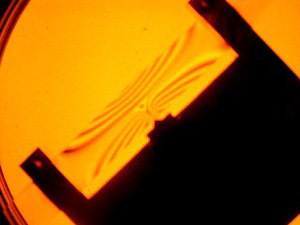 |
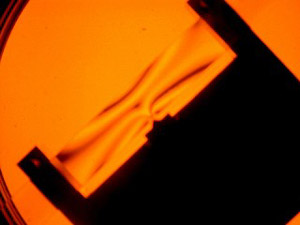 |
|
Annealed bars in 3-point bending rigs |
|
Bar with notch
The stress pattern is symmetric about the notch. The stress pattern is similar to the lobes which radiate from a crack to indicate the regions of plastic deformation. There are dumbbells above and below the crack. The notch was lined up as to be exactly opposite the point of load. Upon initial loading stress develops from either side and slowly builds up, reducing the dark area of no stress until there is only a very small region in the centre of the bar that is not stressed.
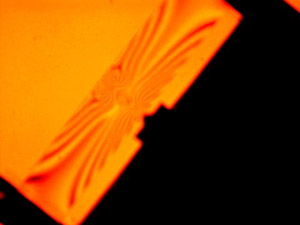 |
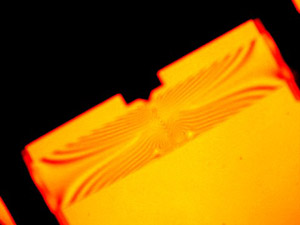 |
|
|
Annealed, notched bars in 3-point bending rigs |
||
Bar with hole
In this bar the neutral axis is interrupted by a circular hole. The stress fields are deflected by this hole, as demonstrated by the perturbations in the isoclines in the vicinity of the hole. Note the stress concentration that has built up at the edges of the hole.
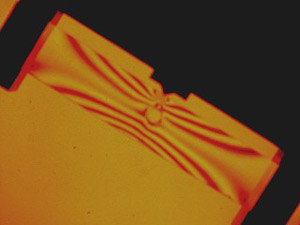 |
|
Annealed bar with hole in a 3-point bending rig |

